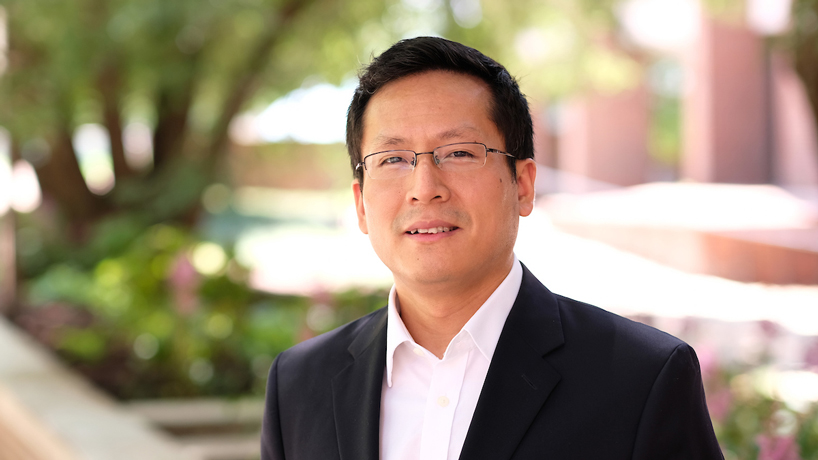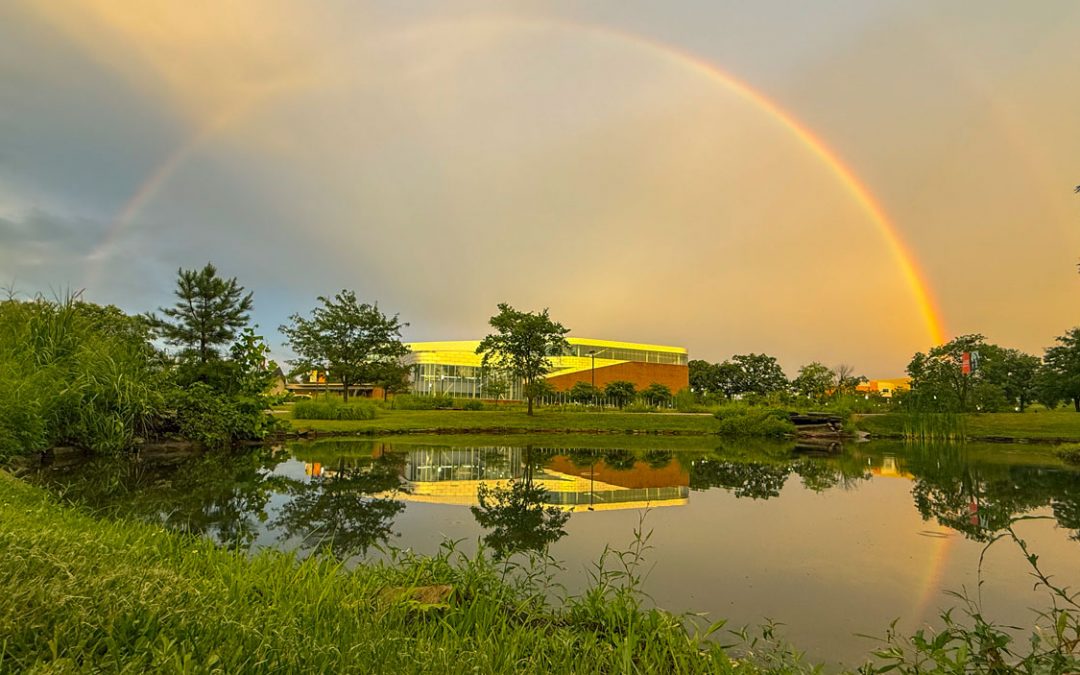
Assistant Professor Jianli Pan received a $500,000 grant from the National Science Foundation to work on developing a new Edge-Internet of Things framework, model and algorithms for what’s been dubbed DeepEdge. (Photo by August Jennewein)
Smart devices are becoming more and more a part of life in the developed world – from the cameras that help secure a growing number of homes to the refrigerators inside modern kitchens.
It’s all part of the growth of the Internet of Things, the interconnection of everyday objects via the internet that allows them to send and receive data.
The list of devices and their applications is constantly expanding, but for now, most share information at a central, often shared cloud.
To unlock IoT’s full potential, Jianli Pan, an assistant professor of computer science at the University of Missouri–St. Louis, says it’ll be critical to continue developing technology that controls these functions at the edges of a network, especially for applications that are delay-sensitive or bandwidth- or data-intensive.
Earlier this month, the National Science Foundation awarded Pan a three-year, $500,000 grant to work on developing a new Edge-IoT framework, model and algorithms for what’s been dubbed DeepEdge. Pan aims to use deep online learning that allocates resources to heterogeneous IoT applications and dynamic IoT devices to maximize the quality of the user experience.
“We know that in the future these Internet of Things applications could be everywhere – smart home, smart factory, smart campus, smart community, smart cities – and you will have many, many different kinds of IoT application running together,” Pan said. “Also, we have 5G coming, which means that there will be wide coverage. Everywhere will be covered, and we will be able to enable many, many such heterogeneous kind of applications.
“We have edge computing to support it. Edge computing is a bit different from the traditional cloud computing. Cloud computing is remote and it’s powerful, but the delays are large and the bandwidth is limited.”
That can create problems with, for example, cognitive assistance tools designed for people with disabilities that rely on augmented or virtual reality. That’s also true for the cameras keeping watch over a person’s home or business.
Pan hopes DeepEdge will solve that problem.
“You don’t have to rely on the network connection,” he said. “As long as your home network is okay, it’s okay. This high bandwidth interaction will be done in edge. We envision many such applications will be empowered in the future by such edge computing.”
Advances in edge technology could also alleviate privacy concerns that come with storing sensitive information, including health information, in a central cloud owned by a third party.
Pan has built a testbed at UMSL to conduct research on edge cloud capabilities, and he’s connected a series of IoT devices, integrating blockchain and smart contract capabilities for the purposes of security resource allocation.
He oversees one postdoctoral fellow and one PhD student conducting this research, and much of the NSF grant will go toward supporting their work.
Pan also aims to broadly involve underrepresented high school students in the UMSL/Jennings Summer Internship Program in the project, helping them develop strong research skills integrated with computer science education.














